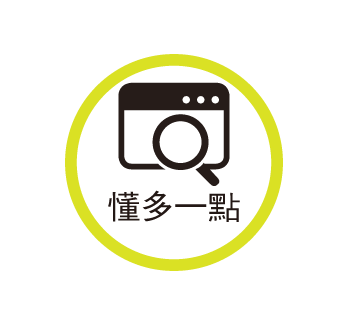【Local Medical】Sinusitis patients at high risk of eye socket swelling can lead to blindness
[ad_1]
Text: Chen Qiulei/Chen Xiaoquan Organizer: Liang Yingxiu
Eye socket swelling is the most obvious symptom among various eye diseases, which can be mainly divided into inflammation, tumor, bacterial infection and idiopathic diseases of unknown etiology.
In Asia, 1/100,000 people suffer from such eye diseases, and some even go blind due to delay in seeking medical treatment.
People can check by themselves, and if they find foreign objects and pain, seek medical advice immediately.
Dr. Dai Lirong
(Dr Tai Lai Yong)
(Kuala Lumpur) There are many bone cavities in our skull, one of which is used for the eyeball, and its bone cavity is also called the eye socket.
In addition to the eyeball, the interior of the eye socket also contains optic nerves, eye muscles, fat, various nerve lines, blood vessels, etc., while the exterior of the eye socket includes eye tissues such as eyebrows and eyelids. Therefore, eye socket swelling is the most obvious symptom among various types of eye diseases, and severe cases may even cause blindness.
Basal cell carcinoma of the eyelid is most common
Dr. Tai Lai Yong, Consultant of Ophthalmology and Oculoplastic Surgery, pointed out that there was a 17-year-old patient whose eye socket was infected by bacteria, which caused internal swelling to compress the optic nerve. Although the swelling was partially removed, However, damage to the optic nerve resulted in blindness in the left eye.
“Orbital diseases can be divided into 4 types,
They are inflammation, tumor, bacterial infection and idiopathic.
When mentioning inflammation, we must mention thyroid eye disease.
This disease may also be called Graves’ ophthalmopathy. “
She said that the main cause of thyroid eye disease is an autoimmune antibody problem, which activates the thyroid gland and the inner tissue of the eye socket, resulting in excessive thyroid secretion, causing the muscle fat in the eye socket to become swollen.
Under the instability of the fat in the eye socket, the inner fat will occupy a large area of the eye socket and push the eyeball outward, so we will see the patient’s eyes are big and protruding. The diagnosis and treatment of this disease are different from common eye diseases, so diagnosis is extremely important.
“Ocular socket diseases caused by eye tumors can be divided into two types: benign and malignant. Eye tumors can grow on the surface or inside, and can damage eye tissues and affect vision, while malignant tumors can even damage the eyeball It can lead to blindness, and even have the possibility of transferring to other body tissues, and once it transfers to the brain, it may threaten the life of the patient.”
Many orbital tumors are benign and can take decades to grow, she said. Other noninvasive tumors may develop rapidly and arise directly from adjacent structures such as the sinuses in the eye socket or metastasize from other sites.
Some cancers metastasize to the eye and cause eye socket swelling, the most common of which are lung cancer, breast cancer and prostate cancer.
Orbital swelling can also be caused by eyelid malignancy, a type of skin cancer that occurs around the eye, she noted. Eyelid tumors can be divided into four types: basal cell carcinoma of eyelid, sebaceous gland carcinoma, squamous cell carcinoma of eyelid, and melanoma. Basal cell carcinoma of the eyelid is the most common.
1 per 100,000 people suffer from eye socket swelling
Most of the causes of eye socket swelling are idiopathic and the cause is unknown. Therefore, for such patients, doctors cannot use surgical treatment, and only recommend medication to control symptoms.
“Family genes, cancer drugs, sun exposure, virus infection, radiation and environmental factors induce eye socket swelling. Some people work in a chemical environment for a long time and are often exposed to chemicals. One of the occupations is farmers. Farmers have been exposed to pesticides for a long time. get infected by bacteria.”
She emphasized that another profession that should be paid attention to is fishermen. Although fishermen are not exposed to pesticides, they are often exposed to the sun and seawater for a long time, and they do not have special equipment to protect their eyes like other professionals, which may cause their eyes to be infected by bacteria in the seawater. inflammation.
“If the fatty tissue around the eye socket becomes inflamed with a bacterial infection, it’s called orbital cellulitis, most commonly staphylococcus aureus, and its causes include sinusitis, because our eyes are close to The nose, so the sinusitis can spread to the eyes and cause the eye sockets to swell.”
At present, there is no incidence rate of eye socket swelling in Malaysia, but the incidence rate in Asia is 1:100,000, and one person in every 100,000 people suffers from eye socket swelling, and the predisposed groups are regardless of gender, age and race.
Eye socket disease manifests in external symptoms, including enlarged eyes (proptosis), redness and swelling of the eyelids; while internal symptoms include blurred vision, double vision, misalignment of eye balls and pain.
There are two other situations that must be paid attention to. First, people suffering from sinusitis are more likely to suffer from eye socket infections. That is because the sinuses are very close to the inside of the eyes. Patients with sinusitis should pay more attention.
Eye swelling turned out to be a tumor
Second, food allergies cause eye swelling, which is actually eye socket eye disease. “There was a young patient whose father had a sensitive constitution. His mother thought that she had inherited his father’s gene and her eyes were swollen like his father’s. However, her condition did not improve after two months, so she went to seek medical advice and found out later There’s a tumor growing in the eye.”
How to determine whether you have eye socket disease or detect its condition, Dai Lirong said, first of all, she will check the health of the patient’s eyes from the outside to the inside, and also check whether the activity of eye muscles, vision and intraocular pressure are normal; among them, she will also A tonometer (exophthalmometer) is used to measure the distance between the cornea and the bone of the eye to accurately detect eye swelling.
Then, use your hands to touch whether there are lumps in the eyes. Some symptoms can be known by touch, and some are vice versa. Therefore, computerized tomography (CT Scan) or magnetic resonance imaging (MRI) is the last step in the detection of eye diseases to measure the lesion and its severity.
“I usually do a CT scan for adults, and an MRI for children, and may also need specialized tests like angiography and orbital ultrasonography.”
She said that after confirming what kind of disease the patient belongs to and its degree, the corresponding treatment will be launched. For tumors, surgery can be performed directly, that is, incisional biopsy (incisional biopsy), which removes tumor tissue for testing; excisional biopsy, which removes the entire tumor (excisional biopsy).
Biopsy versus excision of the tumor is based on the likelihood of spread and risk to orbital structures, including the eye, oculus perineus, neurovascular structures, and surrounding tissues. In addition, physicians must consider the potential risk of hemorrhage, resulting in visual impairment and extraocular motor dysfunction.
For any inflammatory disease, take anti-inflammatory drugs, such as steroids or immunosuppressant drugs, etc.; for bacterial infections, take antibiotics. Surgical drainage of pus.
Find out the cause and control the disease with medication
As for the aforementioned idiopathic diseases, since the etiology is unknown, different solutions must be tried, among which surgery to find the lesion is one of them. When the cause cannot be found out, the only way to control the disease is to use drugs.
The course of treatment for thyroid eye disease mentioned above is divided into 4 plans according to the severity of the disease, first, no symptoms of thyroid eye disease, taking steroids; second, mild, taking immunosuppressive drugs; third, moderate, Radiation therapy is used to reduce swelling and improve double vision. Fourth, for severe cases, corresponding surgeries are performed according to different conditions, including eyelid surgery, strabismus (commonly known as corns) surgery, and sunken eye surgery.
“Patients who need sunken eyelid surgery have swelling to the point of compressing the nerve cord, which affects vision. During the operation, ophthalmologists and otolaryngologists need to cooperate with each other to thin or remove the eye bone, and at the same time Pull out the oil in the eye, free up space inside the eye, allow the muscles to move and stretch, and improve vision; if there is a delay in seeking medical attention, there is a possibility of blindness.”
She reminded patients after surgery to remember to take antibiotics and apply antibiotic ointment to the wound, and use cold compresses to reduce swelling. She also suggested resting at home for a week, prohibiting exercise for two weeks, and reducing the use of electronic products to give the eyes enough rest.

EyepainSeek medical advice quickly
causebrain infectionFear of cancer
Eye socket disease cannot be prevented. If there is a problem with the eye and cannot be treated in time due to various reasons, the first is that the condition remains the same, the second is that it worsens, and the third is that it is so serious that it affects other organs. The treatment is not very optimistic. Sometimes even surgery , also does not help.
In addition, eye socket disease caused by bacterial infection may lead to brain infection; if it is cancerous, the cancer cells will spread to other parts.
Consult a specialist
Although the eyes are the window to the soul, many people tend to ignore this organ.
She suggested that an inspection can be carried out first, and if there is no problem, the inspection should be done every two or three years. In addition, patients can also do self-screening at home by lightly touching the surrounding eyes. Once foreign objects or pain are found in the eyes, they should immediately seek medical advice from a specialist.

[ad_2]
Source link

![[Love Wants Sexual Happiness Series 358]Find the culprit and overcome psychogenic erectile dysfunction. Don’t let pressure affect your sexual happiness.](https://chinathenews.com/wp-content/uploads/2024/04/171111-780x420.jpg)

![[Wanqingyi Care]My health, my rights, customized medical methods in the last stage of life](https://chinathenews.com/wp-content/uploads/2024/04/ZZ1-100-780x420.jpg)
![[Kidney Transplantation Special Topic]The survival rate of transplanted kidneys is high without dialysis treatment three times a week](https://chinathenews.com/wp-content/uploads/2024/04/1311-780x420.jpg)



